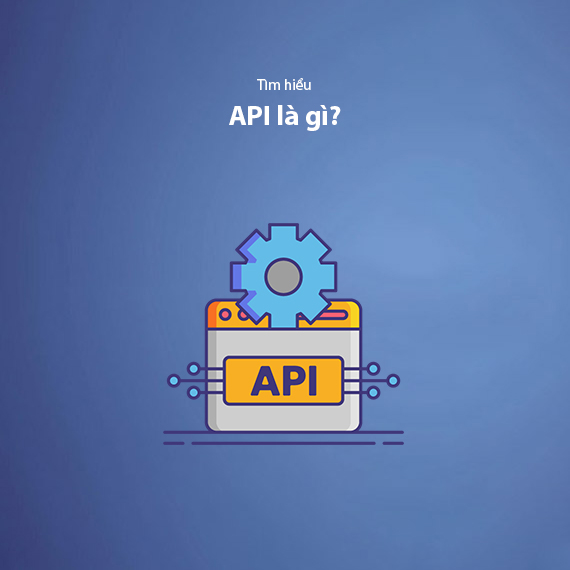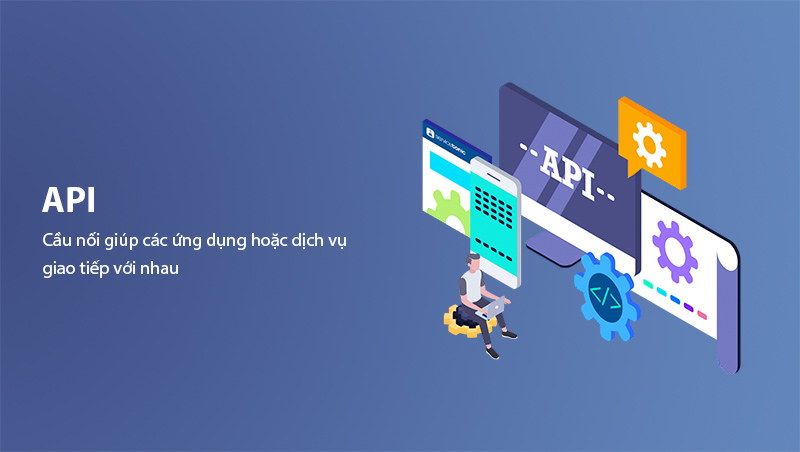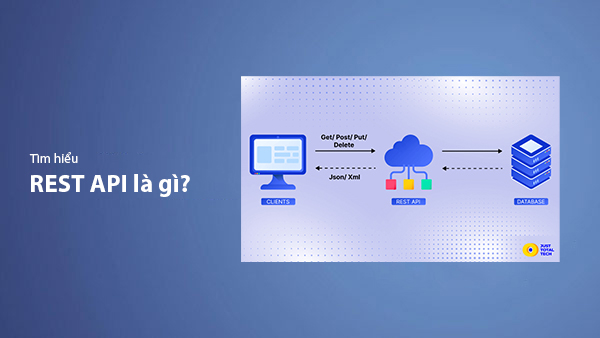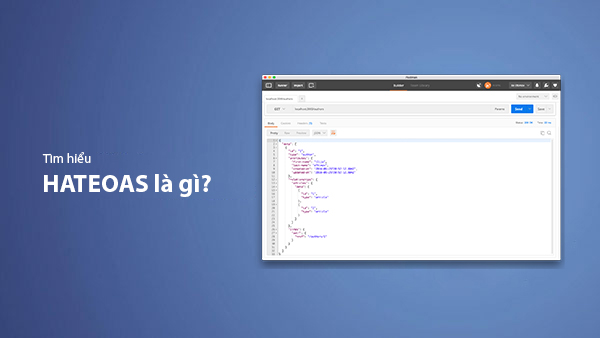What Is an API? The Role of Application Programming Interface in Programming
- Published on

- What is an API?
- The Role of APIs in Programming and Software Development
- Types of APIs
- Web APIs
- Operating System APIs
- APIs for Communicating with the Operating System
- Hardware APIs
- Communication Between Software and Hardware
- APIs in Mobile Applications
- API Structure and Components
- Endpoint
- Request and Response
- HTTP Methods
- Authentication & Authorization
- API Protocols and Standards
- RESTful APIs
- Characteristics and Operation of REST API
- SOAP APIs
- GraphQL
- Real-World Applications of APIs
- Payment Service Integration
- Map and Location Services
- Social Media
- Business Management and Customer Service
- Internet of Things (IoT) Connectivity
- Artificial Intelligence and Machine Learning
- Public Data Access
- API Management Tools and Techniques
- API Gateway
- API Versioning
- API Monitoring and Analytics
- Rate Limiting and Throttling
- API Testing
- Future Trends in API Development
- API First
- GraphQL Replacing REST
- API Automation and Integration with AI
- Advanced API Security
- Serverless APIs
- APIs for IoT Devices
- Conclusion
What is an API?
API (Application Programming Interface) is an interface for application programming, acting as a bridge that allows applications or services to communicate with each other easily. Instead of directly accessing or understanding the internal workings of a system, developers can use an API as a means to request information or perform tasks. APIs work based on requests sent by the client application and the responses received from the server.

For example, when you use a weather app to check the forecast, this app will use a web API to fetch weather data from a third-party service. Thanks to the API, the app doesn’t need to store or process the data directly; it simply sends a request and receives the appropriate response.
An API can be considered a “translator” in the software world, ensuring that heterogeneous systems can work together effectively. This enables the development of flexible, fast, and optimized applications and programming processes.
The Role of APIs in Programming and Software Development
APIs play an indispensable role in promoting connectivity between different software components, making it faster and more efficient to develop and scale applications. Rather than building all functionalities from scratch, developers can leverage APIs to integrate available services, such as online payments, maps, or social networks.
For instance, in an e-commerce app, a payment API like PayPal or Stripe can be used to process transactions, while a shipping API like Shippo helps track orders. This not only saves time and resources but also increases security and reliability by using well-established solutions.
Furthermore, APIs help ensure flexibility and scalability. By creating clear connection points between system components, developers can easily upgrade or change a part without affecting the entire application. Particularly in large systems like microservices architecture, APIs play a central role in ensuring coordination between small, independent services.
Thanks to APIs, communication is not only limited to internal applications but also extends across the entire technology ecosystem, facilitating tighter cooperation between services and platforms.
Types of APIs
APIs are divided into different types depending on their purpose and scope of use. Below are some of the most common types of APIs:
Web APIs
Web APIs allow applications to communicate over the internet, typically using standard protocols like HTTP or HTTPS. When a web or mobile application needs to access data from a server, it sends a request to an API endpoint and receives a response, usually in the form of JSON or XML. For example, the Google Maps API provides services such as maps, directions, or business location information.
Operating System APIs
Operating systems like Windows, macOS, and Linux provide system APIs that allow applications to access core resources and services, such as file management, memory processing, or network communication. Windows API (WinAPI) and POSIX API are prominent examples that help developers build applications compatible with specific operating systems.
APIs for Communicating with the Operating System
These APIs act as a bridge between software and the operating system. They provide access to lower-level functions, such as controlling processes, retrieving system information, or interacting with peripheral devices. This is crucial in developing desktop software or applications that require direct interaction with the operating system.
Hardware APIs
These are APIs that allow software to interact directly with hardware. For example, APIs for graphics cards like DirectX or Vulkan help gaming applications optimize graphics. Other hardware APIs, such as OpenGL, provide a common interface for displaying images across different devices.
Communication Between Software and Hardware
Devices like printers, sensors, or IoT devices often use APIs to exchange information with control software. This allows the software to check the device's status or send control commands in a simple and consistent way.
APIs in Mobile Applications
APIs play a significant role in mobile app development, enabling apps to access device functionalities such as GPS, cameras, or sensors. For example, the Google Play Services API provides tools for managing location, push notifications, and integration with Google services. This helps developers focus on building the user experience without having to rebuild core functionalities from scratch.
APIs, with their diverse types, have become an essential bridge, ensuring that all software, devices, and services can collaborate closely to meet the ever-growing demands of users.
API Structure and Components
Understanding the structure and components of an API is essential for building and using APIs effectively. A well-designed API will have the following core components:
Endpoint
An Endpoint is the URL address representing a specific resource in the API. Each endpoint usually corresponds to a function or data that the API provides, for example:
https://api.example.com/usersto retrieve the list of users.https://api.example.com/orders/123to access the details of order number 123.
The endpoint plays a crucial role in defining where the application sends requests and receives responses.
Request and Response
The communication process via API includes:
- Request: The application sends a request to the server through the endpoint, which may include data or parameters.
- Response: The server returns a response in the form of data (usually JSON or XML) or a status code.
For example, a request to get user information:
GET /users/1 HTTP/1.1
Host: api.example.com
Authorization: Bearer token_here
The response returned:
{
"id": 1,
"name": "John Doe",
"email": "john.doe@example.com"
}
HTTP Methods
HTTP methods define the actions performed on resources. Common methods include:
- GET: Retrieve data (e.g., fetch a list of products).
- POST: Create new resources (e.g., add a new order).
- PUT: Update existing data.
- DELETE: Delete resources.
Authentication & Authorization
To protect data and prevent unauthorized access, APIs often require authentication and authorization:
- Authentication: Verifies the identity of the user, typically through an API key, JWT token, or OAuth.
- Authorization: Checks the user's permissions to ensure they can only access resources they are allowed to.
By closely combining these components, APIs provide a clear and secure interface for applications to communicate and exchange data.
API Protocols and Standards
To ensure compatibility, performance, and security, APIs often follow widely-used protocols and standards. Below are the most commonly used protocols in API design and implementation:
RESTful APIs
REST (Representational State Transfer) is an architecture specifically designed for web APIs, based on the following principles:
- Stateless: No state is stored between requests; each request must contain sufficient information for the server to process it.
- Client-Server: Clear separation between user interface and server-side database.
- Layered System: Layered structure helps improve security and scalability.
REST APIs typically use HTTP methods (GET, POST, PUT, DELETE) and return data in JSON or XML format. For example, a RESTful API for accessing user information might have the endpoint:
GET https://api.example.com/users/123
Characteristics and Operation of REST API
REST API is popular because of:
- Simplicity: Easy to use and implement, suitable for both web and mobile applications.
- Scalability: Data can be customized according to client needs.
- Easy Integration: Many frameworks and libraries support REST API implementations.
SOAP APIs
SOAP (Simple Object Access Protocol) is a robust protocol often used in enterprise systems that require high levels of security and reliability. SOAP relies on XML to exchange data and uses standards like WSDL (Web Services Description Language) to describe services.
SOAP APIs are suitable for complex systems, such as banking or insurance, where large volumes of transactions are processed with high demands for error control and security.
GraphQL
GraphQL, developed by Facebook, is a query language for APIs, allowing clients to request exactly the data they need instead of receiving all data as in REST. For example, instead of calling multiple endpoints in REST, GraphQL allows a single request to fetch related data:
{
user(id: "123") {
name
email
posts {
title
}
}
}
This minimizes the transmission of unnecessary data, improves performance, and optimizes the user experience.
Choosing the appropriate protocol or standard depends on the project's requirements, from scale, security, to performance and specific features the system needs to provide.
Real-World Applications of APIs
APIs are widely used across many fields, helping enhance performance, integrate systems, and improve user experience. Below are some notable real-world examples of how APIs are used:
Payment Service Integration
APIs from providers such as PayPal, Stripe, or VNPay help e-commerce sites integrate secure and fast payment functionality. Instead of building a payment system from scratch, developers can use APIs to process transactions, verify payments, and manage refunds.
Map and Location Services
APIs like Google Maps API, Mapbox, or Here are used to integrate map features, location search, or navigation into applications. For example, a delivery app can use these APIs to track the driver’s location in real-time.
Social Media
APIs from Facebook, Instagram, or Twitter allow third-party applications to access and use features like posting, content sharing, or collecting analytics data. For instance, social media management tools like Buffer use APIs to schedule automatic posts.
Business Management and Customer Service
APIs from CRM (Customer Relationship Management) systems like Salesforce or HubSpot allow businesses to integrate customer information into internal applications, synchronize data, and improve customer service.
Internet of Things (IoT) Connectivity
In the IoT field, APIs are used to control and collect data from smart devices like smart lights, temperature sensors, or air conditioners. For instance, APIs from IoT platforms like AWS IoT Core help connect and manage millions of devices simultaneously.
Artificial Intelligence and Machine Learning
AI APIs such as Google Cloud AI, OpenAI, or IBM Watson provide capabilities for natural language processing, image recognition, or data analysis for applications. For example, a chatbot integrated with an AI API can automatically answer and process customer requests in real-time.
Public Data Access
Many organizations and governments provide public APIs that allow access to statistical, weather, traffic, or financial data. For example, APIs from OpenWeather provide accurate weather forecasts that mobile applications can use.
APIs are not just tools for connecting software, but they open up endless possibilities, allowing businesses and developers to create more powerful and flexible solutions.
API Management Tools and Techniques
API management is a critical element in ensuring performance, security, and scalability of services. API management tools and techniques help developers monitor, secure, and optimize APIs throughout their lifecycle. Below are some common tools and techniques:
API Gateway
An API Gateway is an intermediary tool that acts as a bridge between clients and backend APIs. It helps manage requests, load balancing, security, and optimization of APIs. Some functions of an API Gateway include:
- Routing requests to the appropriate backend API.
- Security checks by authenticating and authorizing users.
- Data transformation between different formats (e.g., from JSON to XML).
- Load balancing and performance management.
Examples like Kong and Amazon API Gateway are popular tools for implementing and managing APIs effectively.
API Versioning
API Versioning is crucial for maintaining compatibility when changes to the API are made. Managing different versions of an API ensures that old applications do not break when new updates are deployed. Common methods include:
- Versioning in the URL:
https://api.example.com/v1/resource. - Versioning in the header: Send version information in the request header.
API Monitoring and Analytics
Monitoring and analytics are essential techniques for developers to track the performance, stability, and security of APIs. Tools like Prometheus, Datadog, or New Relic collect metrics and logs from APIs, helping identify issues or optimize performance.
Rate Limiting and Throttling
To protect APIs from excessive requests (DDoS attacks) or overuse, Rate Limiting and Throttling techniques are often applied. Tools like API Gateway or Cloudflare help configure these limits, ensuring the system’s resources are protected and the API remains stable.
API Testing
API Testing ensures that APIs function correctly, securely, and efficiently. Tools like Postman, SoapUI, or JMeter provide the ability to test requests, check performance, and secure the API. API testing typically includes:
- Functional testing: Ensure the API performs the tasks it's supposed to.
- Performance testing: Measure the API’s load handling capacity and speed.
- Security testing: Verify the API’s protection against vulnerabilities.
Efficient API management helps optimize resource use, minimize risks, and improve user experience.
Future Trends in API Development
APIs will continue to play a central role in connecting services and driving innovation in many technological fields. Below are some emerging trends in API development:
API First
API First is a software development approach where the API is considered the core element and is designed before developing any application or system. Instead of building software and adding an API later, developers design the API from the start, ensuring consistency and ease of expansion for various applications. This is particularly useful in developing microservices and distributed systems.
GraphQL Replacing REST
Although RESTful APIs are still very popular, GraphQL is gaining traction due to its flexible data querying capabilities and reduction in unnecessary data transmission. GraphQL allows users to request exactly the data they need, rather than receiving all data as in REST. Its use is increasing in web and mobile applications due to its efficiency and bandwidth savings.
API Automation and Integration with AI
APIs are becoming smarter with the integration of Artificial Intelligence (AI) and Machine Learning (ML) technologies. For example, APIs can automatically optimize performance or analyze data in real-time without human intervention. Tools like Google Cloud AI API or Microsoft Cognitive Services API offer powerful AI solutions for image recognition, natural language processing, or data prediction.
Advanced API Security
With the rise of cyberattacks and security threats, protecting APIs is becoming a top priority. Advanced API security techniques will continue to evolve, including the use of strong authentication methods like OAuth 2.0, JWT (JSON Web Tokens), and data encryption to safeguard APIs against vulnerabilities. API security tools will also continue to develop, making it easier for developers to detect and mitigate threats.
Serverless APIs
Serverless computing is becoming a significant trend in API development. Instead of managing servers, developers can build and deploy APIs without worrying about infrastructure. Platforms like AWS Lambda and Google Cloud Functions allow serverless API development, reducing costs and increasing the scalability of applications.
APIs for IoT Devices
With the rapid growth of Internet of Things (IoT), APIs will play an increasingly important role in connecting and managing smart devices. APIs allow IoT devices to communicate with each other and with cloud services, enabling remote monitoring and control of devices. Platforms like Google Cloud IoT API and Azure IoT Hub are becoming popular in providing solutions for IoT ecosystems.
APIs will continue to play a critical role in changing and enhancing connectivity between systems, services, and devices. These trends will make APIs more powerful, meeting the ever-growing demands of users and technological advancements.
Conclusion
APIs are not only tools for connecting systems but also serve as essential bridges in developing modern applications, from web, mobile to IoT and AI systems. Understanding and effectively implementing APIs is crucial to building flexible, scalable, and maintainable software solutions.
As technology continues to advance, APIs are no longer limited to simple data exchange but are at the center of supporting new business models, such as microservices, serverless computing, and the integration of advanced technologies like AI and IoT. Therefore, developers and businesses need to keep up with API development trends and apply the latest technologies to optimize performance, security, and scalability.
In conclusion, APIs are essential elements in building complex applications, providing a smooth and efficient user experience. Researching, applying, and managing APIs scientifically will help organizations create innovative products that meet market demands and continue to evolve.
Latest Posts

Lesson 26. How to Use break, continue, and return in Java | Learn Java Basics
A guide on how to use break, continue, and return statements in Java to control loops and program execution flow effectively.

Lesson 25. The do-while Loop in Java | Learn Basic Java
A detailed guide on the do-while loop in Java, including syntax, usage, examples, and comparison with the while loop.

Lesson 24. How to Convert Decimal to Binary in Java | Learn Basic Java
A guide on how to convert numbers from the decimal system to the binary system in Java using different methods, with illustrative examples.

Lesson 23. How to Use the While Loop in Java | Learn Java Basics
Learn how to use the while loop in Java with syntax, real-world examples, and practical applications in Java programming.
Related Posts

What is REST API? Complete A-Z Knowledge About REST API
REST API is one of the essential concepts that every backend developer needs to fully understand. This article provides comprehensive knowledge about REST API, including its definition, principles of operation, and how to build a standard RESTful API.

What is HATEOAS? How to Build APIs Using HATEOAS
Learn about HATEOAS, an important concept in API development, and how to build APIs using HATEOAS to improve interactivity and scalability.

What Is GraphQL? The Advantages of GraphQL Over REST API
Explore GraphQL, a modern API technology, and why it outperforms REST API in many web development scenarios.

What is XSS? Signs of Detection and Effective Prevention Methods
Learn about XSS, signs of detection, and effective prevention methods for XSS attacks in websites.

